Streamline Your API Design Workflow: Using Schemas with EchoAPI
Introduction
Schemas are essential in API development, offering a robust framework for defining data structures. They act as blueprints, setting the shape and validation rules of data to ensure consistency and reliability across application components. Using schemas in your API improves data integrity and streamlines communication between services by adhering to a unified format. This guide will walk you through the significance of schemas and illustrate their application within EchoAPI to optimize your API design and functionality.

What is EchoAPI?
EchoAPI is a powerful API debugging and management tool designed to simplify the development process for programmers. By integrating functionalities such as automated testing, load testing, and real-time documentation generation, EchoAPI enhances productivity and streamlines API workflows. It offers a suite of free plugins compatible with popular development environments like Chrome, VSCode, and IDEA, making it easier for developers to create, test, and manage APIs without unnecessary hassle. EchoAPI's lightweight, login-free access ensures a seamless development experience, allowing developers to focus on building rather than managing tools.
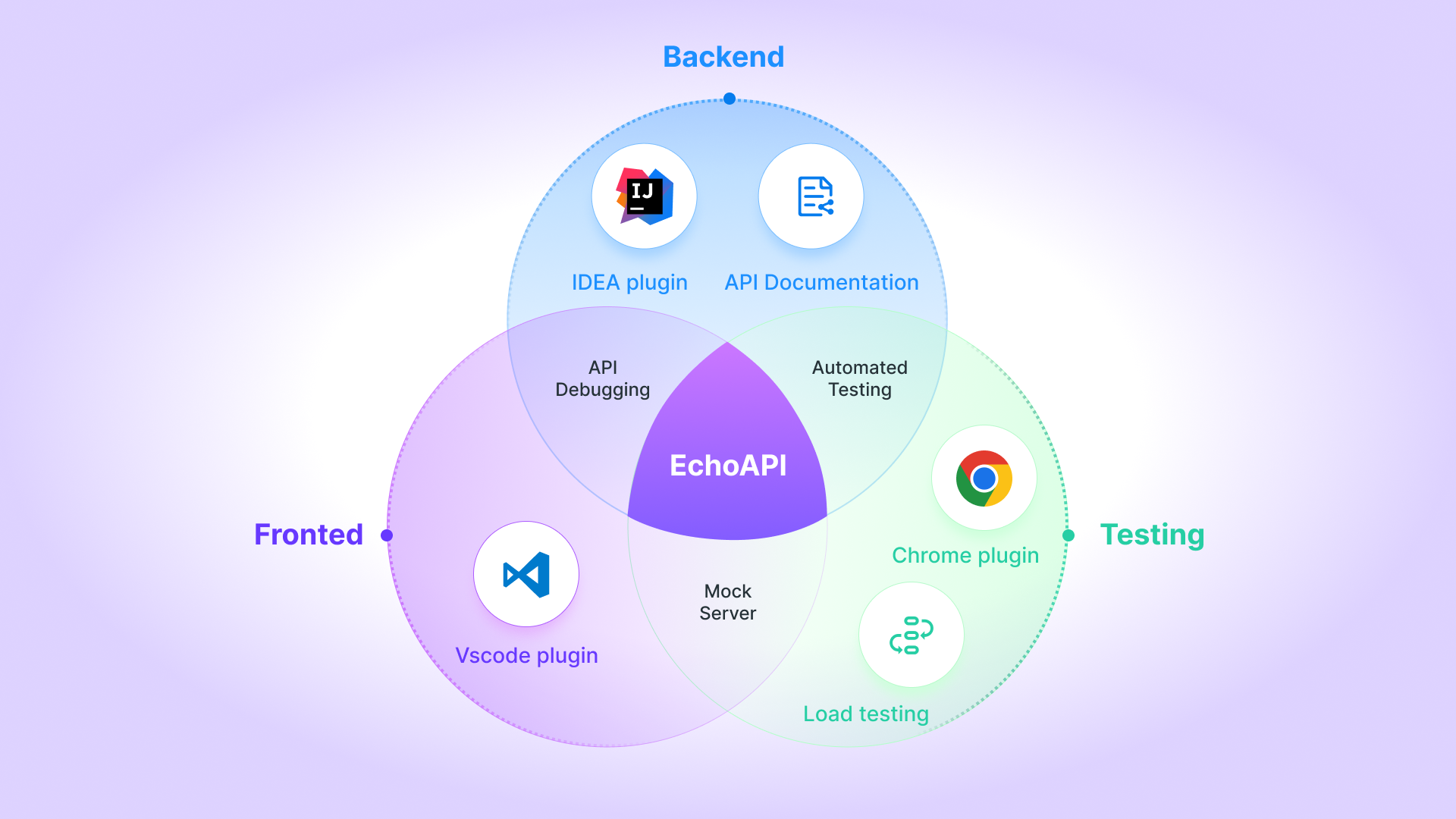
Leveraging Schemas in EchoAPI
When creating schemas, defining input parameters or specifying expected responses, data structures are visually represented using JSON schema to simplify interface design.
Creating new Schemas

Fields:
- Schema Name: Required and must be unique. Typically consists of letters, numbers, and underscores.
- Alias: Generally a descriptive name in your native language for easier searching and viewing.
- Directory: Enables categorization and management of schemas.
- Remarks: Used to describe and explain the purpose of the schema.

Editing Schemas

Intelligent Import
With the intelligent import feature, you can quickly generate a JSON schema from an existing structure file, eliminating the need for manual input. Currently, it supports JSON, XML, JSON schema, and MySQL DDL formats.
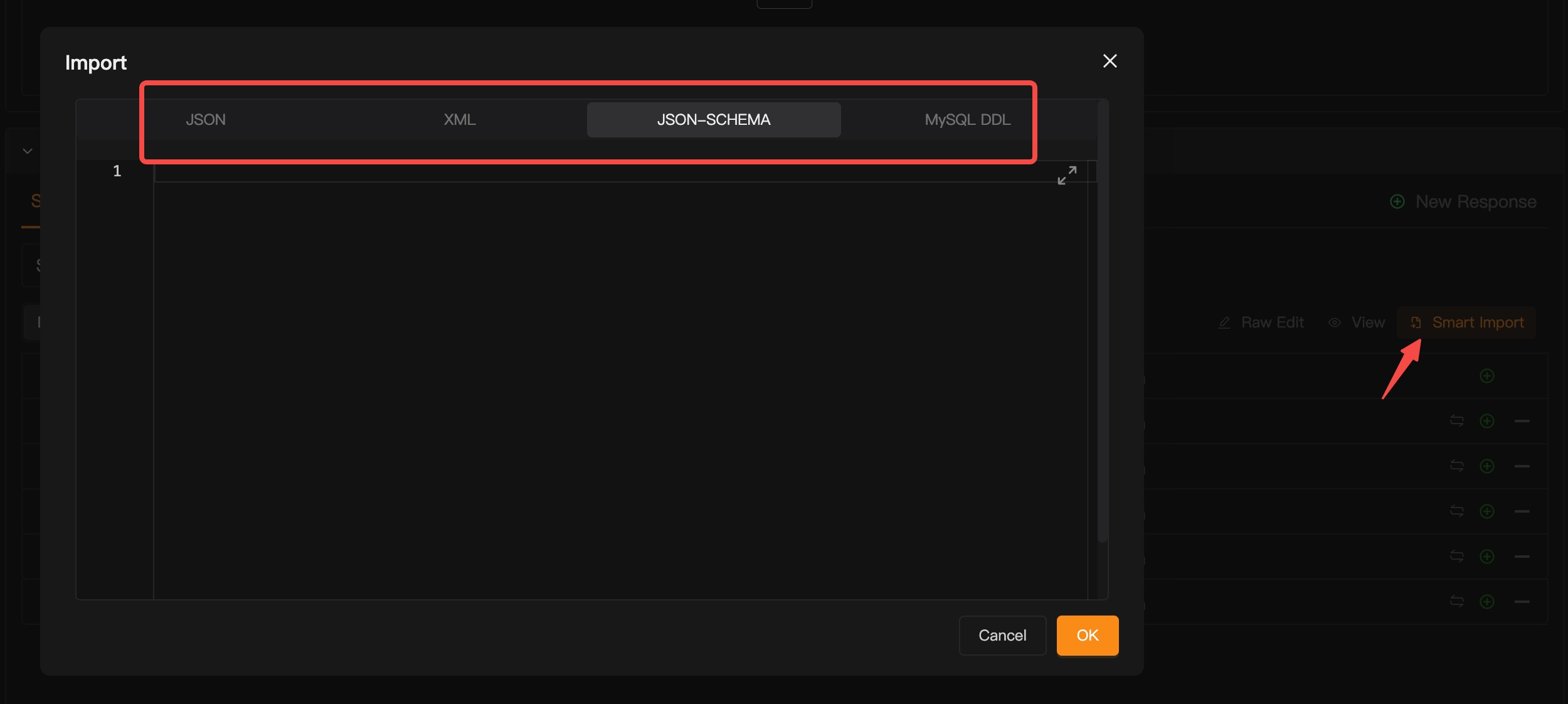
JSON Example:
{
"userInfo_get_response":{
"result":{
"model":{
"open_id":"qwertyuiuduiasd",
"avatar":"avatar url",
"nick":"snsNick"
},
"err_message":"err_message",
"err_code":"err_code",
"success":false
}
}
}
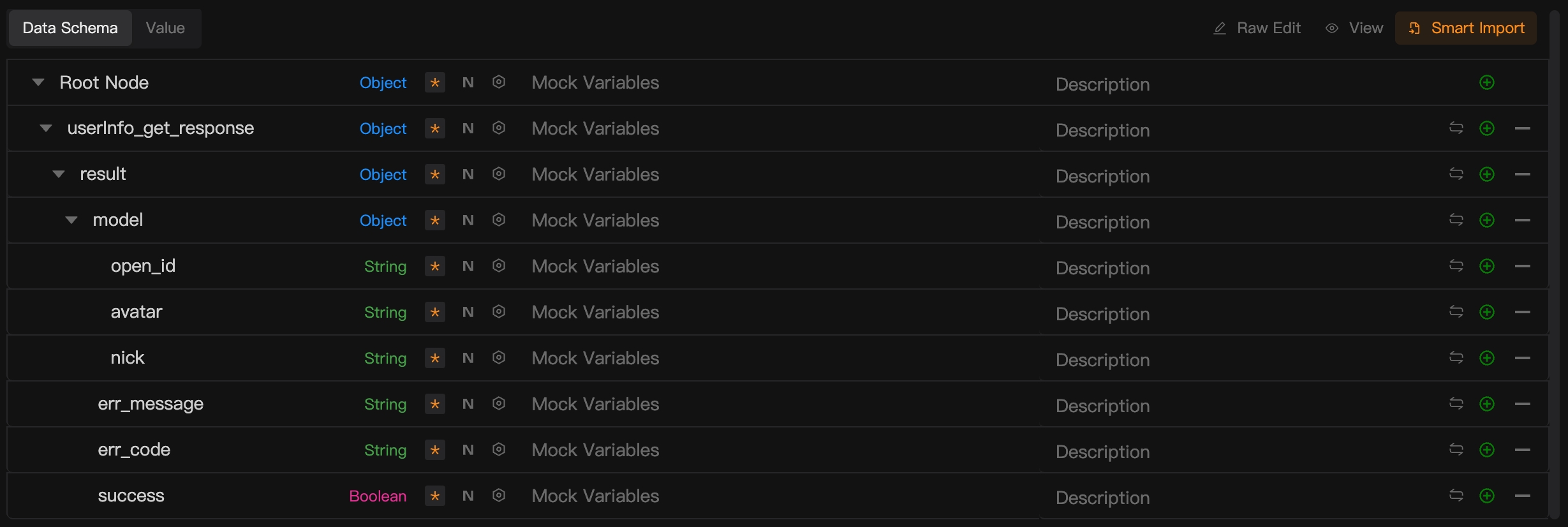
XML Example:
<error_response>
<code>50</code>
<msg>Remote service error</msg>
<sub_code>isv.invalid-parameter</sub_code>
<sub_msg>Illegal parameter</sub_msg>
</error_response>

JSON Schema Example:
{
"$schema": "http://json-schema.org/draft-07/schema#",
"title": "Person Schema",
"type": "object",
"properties": {
"name": {
"type": "string",
"description": "The name of the person.",
"minLength": 2
},
"age": {
"description": "Age in years which must be equal to or greater than zero.",
"type": "integer",
"minimum": 0
},
"email": {
"type": "string",
"description": "The email address of the person.",
"format": "email"
}
},
"required": ["name", "age", "email"]
}

MySQL DDL Example:
CREATE TABLE orders (
order_id INT AUTO_INCREMENT PRIMARY KEY,
customer_id INT NOT NULL,
order_date DATE NOT NULL,
total_amount DECIMAL(10, 2) NOT NULL,
status VARCHAR(50) NOT NULL,
FOREIGN KEY (customer_id) REFERENCES customers(customer_id)
);

Advanced Field Settings
Beyond basic settings like field requirements or nullability, certain field types support advanced settings and can also be edited directly in the source code. For example, arrays can have properties like the number of items defined.

String:

Number:

Array:
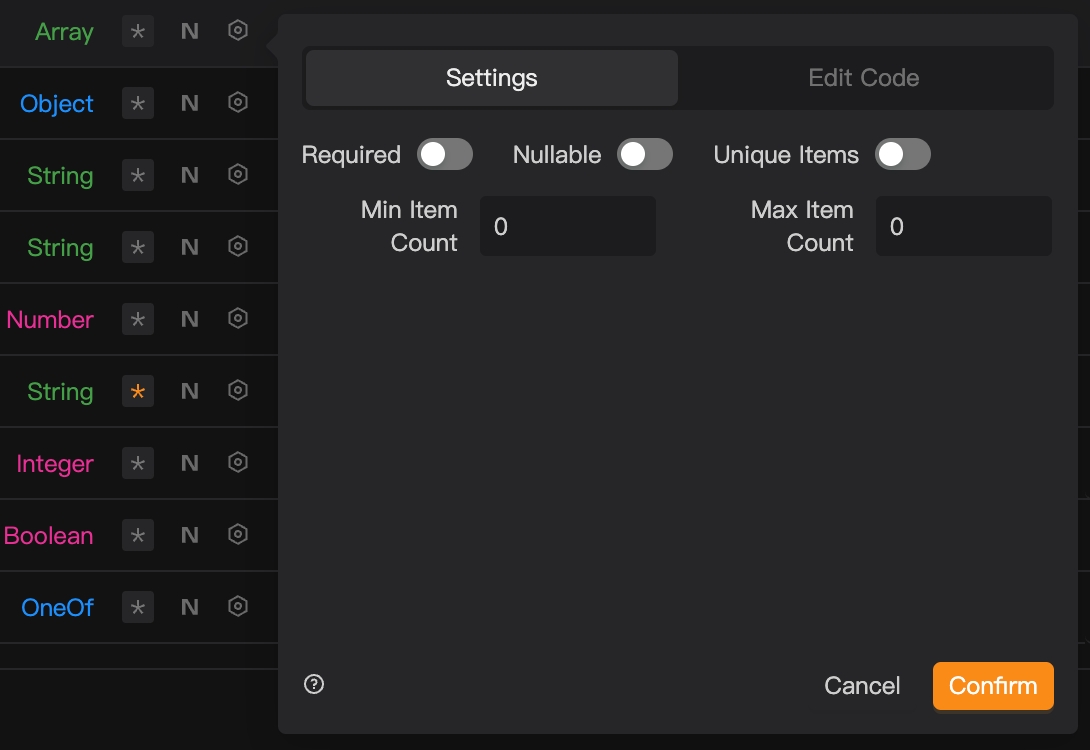
Object:

Boolean:
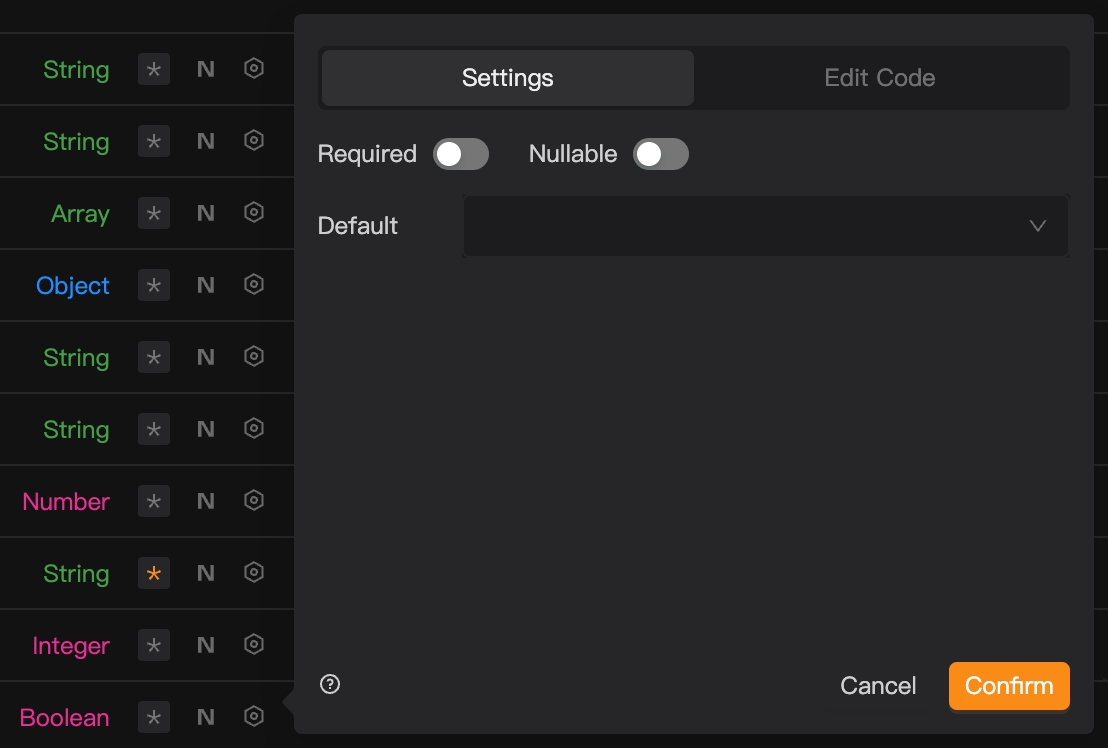
Integer:

OneOf, AnyOf, AllOf:

Referencing Schemas
When adding a child node, you can quickly reference an already schema.

Preview


Raw Edit
Design the data structure by editing the JSON schema source code directly.

Conclusion
Incorporating schemas into EchoAPI simplifies the design, validation, and maintenance of data structures. By leveraging features like intelligent import and advanced field settings, developers can ensure data consistency and integrity across their applications. With features like schema referencing and raw editing, EchoAPI offers flexibility, making schema management both efficient and effective. Adopt these schema practices in EchoAPI to elevate your API development workflow, ensuring robust and adaptable data interactions.
